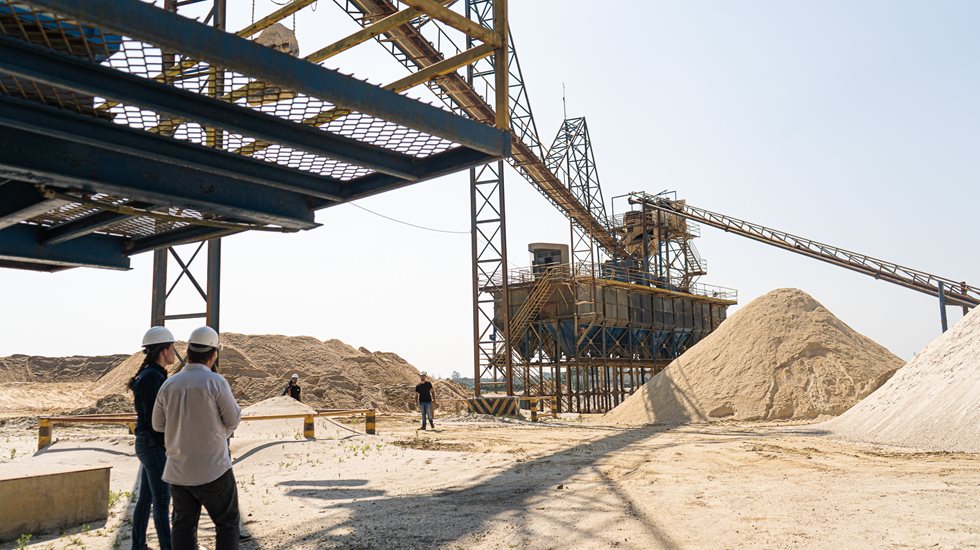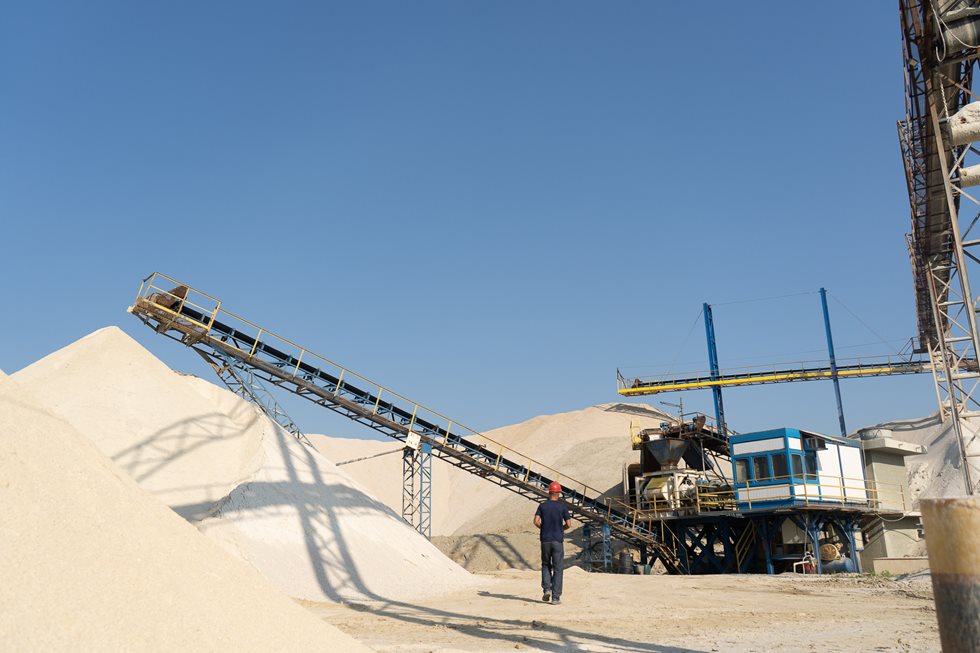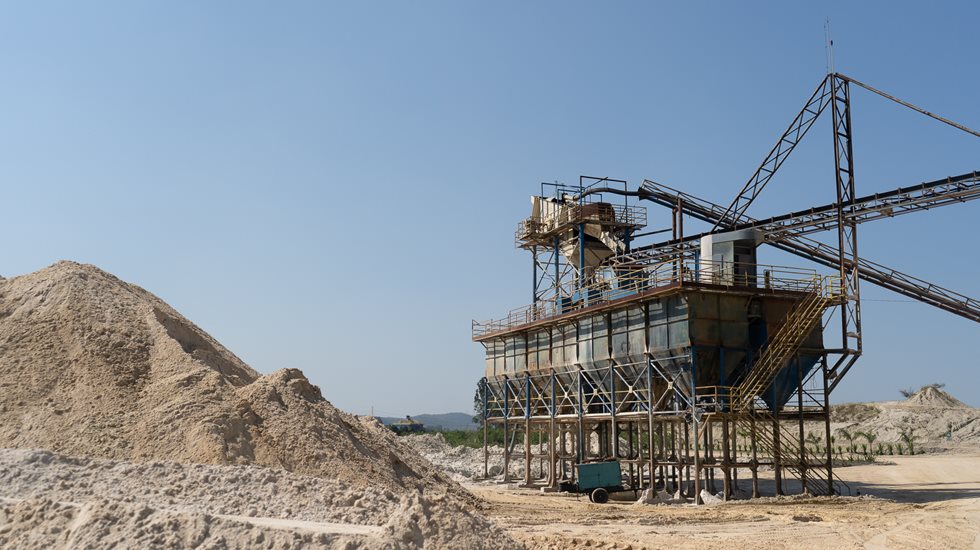The good performance of the first high-pressure roller crusher led the mining company to acquire a second crusher with the same technology. The new crusher is an HRC 8 model, which has the same frame as the HRC 800, but more assertively targets the aggregates segment.
Equipment optimizes aggregate production
“We have been operating the HRC 8 for six months and it has met the specifications we had set. This is demonstrated by two facts: our average sand stock has not increased, and our coarse sand and pebbles have been reduced,” notes mining engineer Roberto Freitas, Itaquareia’s Operations Manager. According to him, the energy consumption of the two 100cv motors have met their expectations in the process
The previous experience with the HRC 800 also contributed to the decision on acquiring the new HRC 8. For Freitas, the training of the workforce helped in the process, as well as the technical delivery. The level of automation of the crusher favors the control of the feed flow, the engineer says. “It’s an easy-to-operate crusher. Everything is featured on the panel, with the adjustments and indications of the opening of the feeding,” summarizes Freitas.
“Our focus at this time, besides the conventional maintenance – like the oil change and the normal lubrication of the machine – is to maximize productivity in the crushing of the materials, guaranteeing the quality and adding value to our products,” he adds.
Itaquareia pioneered the use of HRC 8 in Brazil
According to Willer Tamotsu Ito, Metso’s Senior Product Engineer, Itaquareia’s experience proves the success story of the HRC line in the field. He followed the startup of the two crushers and says that the adoption of the HRC 8 proved more suitable for the operations of aggregates, without changing the production capacity. “The big difference is in the HRC 8’s maximum pressure, which is just over half of the HRC 800’s,” he explains.
Adjustments allow for increased capacity and reduced power consumption
Technically, the HRC follows the same principle of any HPGR: it uses two counter-rotating rollers to crush the ore, with the high pressure applied by hydraulic cylinders. The differentiation, however, involves maximizing the amount of crushed ore as a function of the internal design of Metso equipment. On a pilot scale, this resulted in 20% more capacity compared to traditional market HPGRs as well as a 10% reduction in energy.


